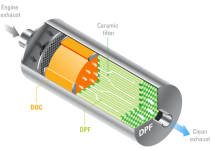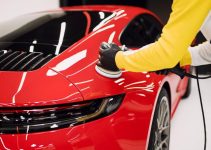Earlier this year, we covered the Insurance Institute for Highway Safety’s (IIHS) mid-sized vehicle headlights tests, with the Toyota Prius performing best when it comes to headlight performance. Now, the IIHS has run the same tests against compact SUVs.
Not a single small SUV out of 21 tested earned a “good” rating (the best rating from IIHS) in the headlight evaluations, and only a handful are available with acceptable-rated headlights.
Among the 21 vehicles, there are 47 different headlight combinations available. More than two-thirds of them are rated poor, making this group of vehicles even more deficient when it comes to lighting than the midsize cars that were the first to be rated earlier this year.
Here’s a video recap of the institute’s test results:
As with midsize cars, the IIHS evaluations of small SUVs showed that a vehicle’s price tag doesn’t correspond to the quality of headlights. More modern lighting types, including high-intensity discharge (HID) and LED lamps, and curve-adaptive systems, which swivel in the direction of steering, also are no guarantee of good performance.
While studies have pointed to advantages for advanced lighting systems, the IIHS rating system doesn’t favor one type of technology over the other. Instead, it simply measures the amount of usable light provided by low beams and high beams as vehicles travel on straightaways and curves.
IIHS engineers evaluate headlights on the Vehicle Research Center’s track after dark. A special device is used to measure how far the light is projected as the vehicle is driven on five approaches: traveling straight, a sharp left curve, a sharp right curve, a gradual left curve and a gradual right curve.
Glare from low beams for oncoming drivers is also measured in each scenario. A vehicle with excessive glare on any of the approaches can’t earn a rating higher than marginal.
The only type of technology given an explicit nod in the ratings is high-beam assist, which automatically switches between high and low beams based on the presence of other vehicles. Vehicles can earn extra credit for this feature because of its potential to increase low rates of high-beam use.
The best-performing headlights in the small SUV group belong to a new model, the Mazda CX-3, and are available on its Grand Touring trim. They are curve-adaptive LED lights with optional high beam assist. The low beams perform well on both right curves and fairly well on the straightaway and sharp left curve; however, they provide inadequate light on the gradual left curve. The high beams perform well on most approaches.
The other vehicles available with acceptable headlights are the Ford Escape, the Honda CR-V and the Hyundai Tucson. None of the three are curve-adaptive, and only the Escape has high-beam assist. Still, all of them provide fair or good illumination in most scenarios.
The worst headlights among the small SUVs belong to a different Honda—the new-for-2016 HR-V. The illumination provided by the HR-V’s halogen low beams and high beams is inadequate on all four curves and on the straightaway. The HR-V is one of 12 small SUVs that can’t be purchased with anything other than poor-rated headlights.
For those vehicles available with higher-rated headlights, consumers need to make sure they’re getting the right ones. For example, the Tucson’s acceptable headlight combination is available on the SUV’s Limited version, but the headlights on other trim levels of the Tucson earn a poor rating. Even the Limited, when equipped with curve-adaptive headlights, earns a poor rating because of excessive glare.
Seventeen of the rated SUV headlight combinations have unacceptable glare. They include all types of lights — halogen, HID and LED — and none of the headlight types is more likely than the others to have excessive glare. Three of the 17 fell short of an acceptable rating on the basis of glare alone.
IIHS plans to conduct headlight tests on pickups next.
[wpdatatable id=6]






